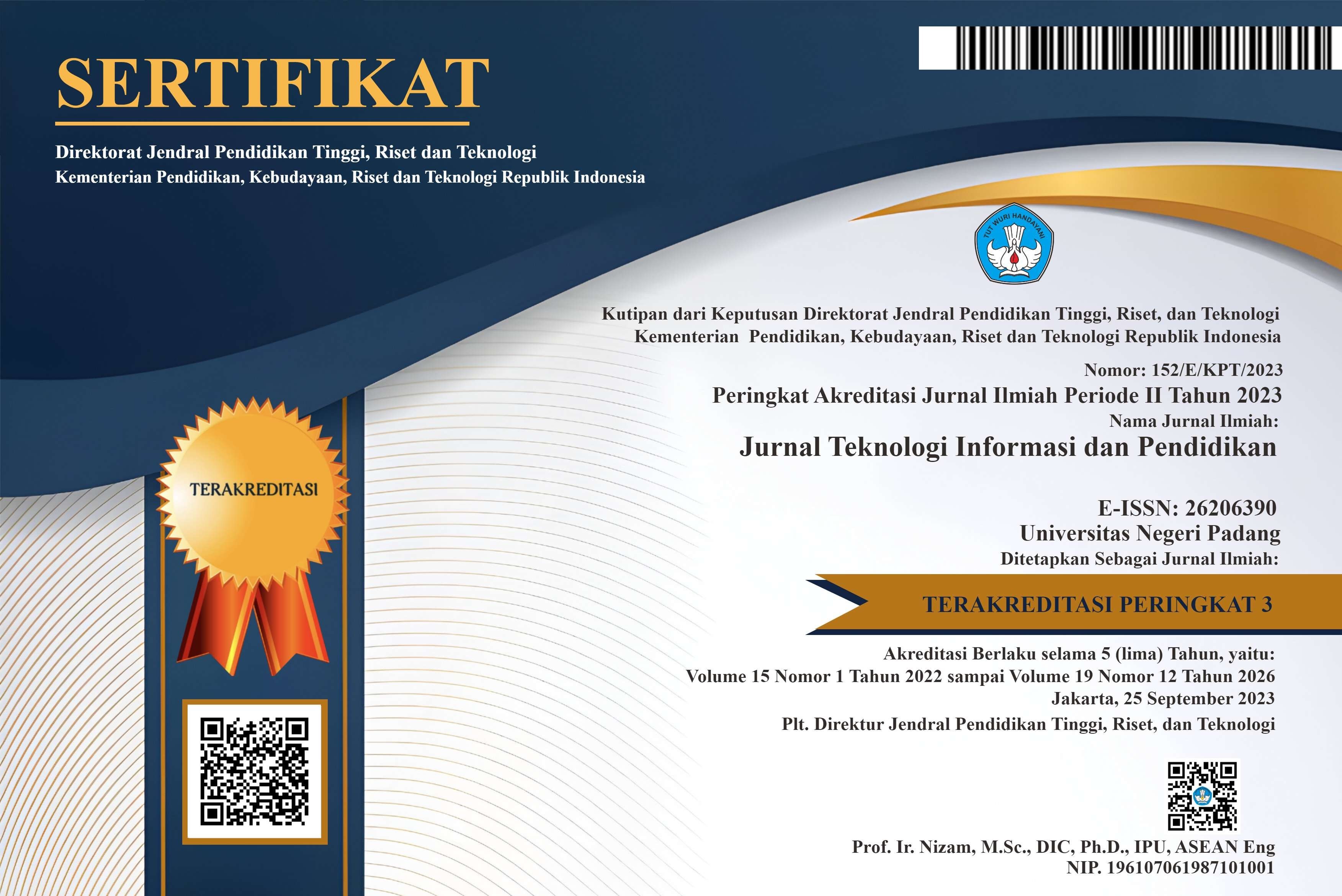Visual Book as a Learning Medium of Islamic Religious Education Courses for Politeknik Elektronika Negeri Surabaya (PENS) Students
DOI:
https://doi.org/10.24036/tip.v14i2.473Keywords:
Islamic Religious Education, PENS students, visual books.Abstract
The Islamic Religious Education course, which is then abbreviated as PAI, is a compulsory subject for Muslim students that must be implemented in every university in Indonesia. This is stated in Law No. 12 of 2012 Article 35 Paragraph 3 concerning Higher Education. In its implementation, Politeknik Elektronika Negeri Surabaya (PENS) has given these courses to students. This course aims to shape students into human beings who believe and fear Allah SWT. and have noble character. On the other hand, an understanding of the subject matter of PAI is very important in order to realize this main goal. Based on the results of research entitled Questionnaire for Islamic Religious Education Courses at PENS, it was stated that 75% of the 40 respondents found it difficult to learn and understand some chapters due to the lack of visualization of the material and too many terms that were difficult to understand or memorize. Another problem found through this research is that the intensity of respondents' reading activities is still relatively low. Therefore, this research is expected to be able to increase understanding related to PAI courses through reading activities for PENS students by contributing in the form of making visual books as interesting PAI learning medium.
References
Pemerintah Indonesia. 2012. Undang-Undang Nomor 12 Tahun 2012 Tentang Pendidikan Tinggi
Robiatul Adawiyah, “Peningkatan Hasil Belajar Pendidikan Agama Islam Mahasiswa Melalui Kompetensi Profesional Dosen dan Minat Belajar Mahasiswa”. Jurnal Pendidikan Islam, vol. 1, no. 1, pp. 131, 2019.
Dhamar Mawardhi and Senja Aprela Agustin, “Perancangan Buku Visual Eksplorasi Motif Batik Ponorogoan sebagai Upaya Pelestarian Warisan Budaya Daerah.” Jurnal Sains dan Seni ITS, vol. 7, no. 2, pp. F103, 2018.
Adhitya Rizky Perdana, “Perancangan Buku Visual Sebagai Media Pengenalan Permainan Tradisional Anak Jawa Timur.” Undergraduate thesis, pp. 17, 2018.
Dian Indriana, Ragam Alat Bantu Pengajaran, DIVA Press, Jogjakarta, 2011.
Azhar Rasyad, Media Pembelajaran, PT Grafindo Persada, Jakarta, 2011.
Roy, Brewer, Pengantar Tipografi, Pusat Grafika Indonesia, Jakarta, 1971.
Adi Kusrianto, Pengantar Desain Komunikasi Visual, Andi Offset, Yogyakarta, 2009.
Surianto Rustan, Layout, Dasar & Penerapannya, Gramedia Pustaka Utama, Jakarta, 2008.
Dameria, Anne, Color Basic Panduan Dasar Warna untuk Desainer & Industri Grafika. Link and Match Graphic, Jakarta, 2007.
Muhammad Izzul Haq Zain, “Kontekstualisasi Hadits Larangan Menggambar dengan Desain Grafis.” Jurnal Studi Hadis, vol. 4, no. 1, pp. 109-116, 2018.
Sugiyono, “Metode Penelitian Kuantitatif Kualitatif dan R&D”, Alfabeta, Bandung, 2014















.png)














